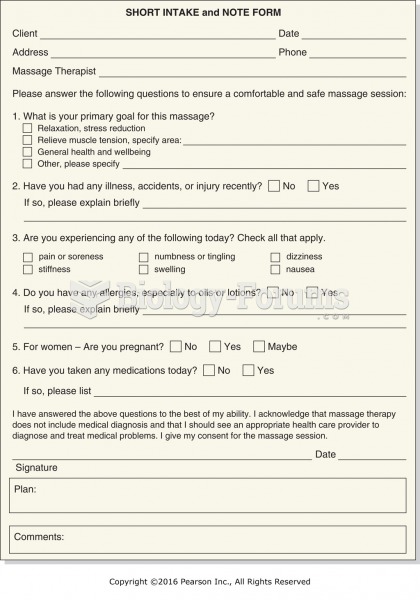Answer to Question 1
Correct Answer: 1
Rationale 1: Diarrhea is a symptom of pseudomembranous colitis, a serious adverse effect associated with tetracycline therapy.
Rationale 2: Diarrhea is not associated with paralytic ileus.
Rationale 3: Bowel obstruction is not associated with tetracycline therapy.
Rationale 4: Clay-colored stool is associated with impaired biliary function.
Global Rationale: The presence of diarrhea must be monitored carefully due to the possibility of pseudomembranous colitis (PMC). Caused by Clostridium difficile, this is a rare though potentially severe disorder resulting from therapy with tetracyclines and other classes of antibiotics. Diarrhea is not associated with paralytic ileus. Bowel obstruction is not associated with tetracycline therapy. Clay-colored stool is associated with impaired biliary function.
Answer to Question 2
Correct Answer: 1,2,3
Rationale 1: Newer macrolides have a longer half-life, which means less frequent dosing and greater client adherence.
Rationale 2: Newer macrolides do cause fewer gastrointestinal symptoms.
Rationale 3: Macrolide antibiotics are well tolerated and considered one of the safest classes of antibiotics.
Rationale 4: Food can decrease the absorption of macrolide antibiotics and should be taken on an empty stomach. Some macrolide antibiotics are enteric coated to pass by the acid contents of the stomach.
Rationale 5: Macrolide-resistant strains of bacteria are becoming more common.
Global Rationale: Newer macrolides can be dosed less frequently due to a longer half-life, cause fewer gastrointestinal symptoms, and are considered one of the safest classes of antibiotics. Food does decrease absorption and resistant strains of bacteria are becoming more common.







